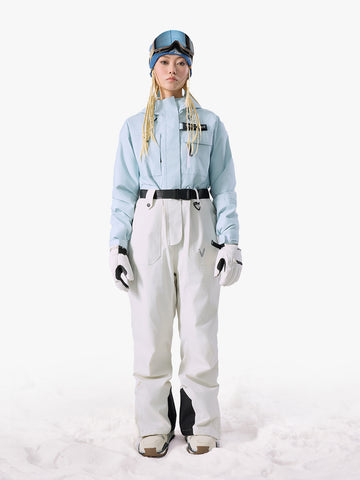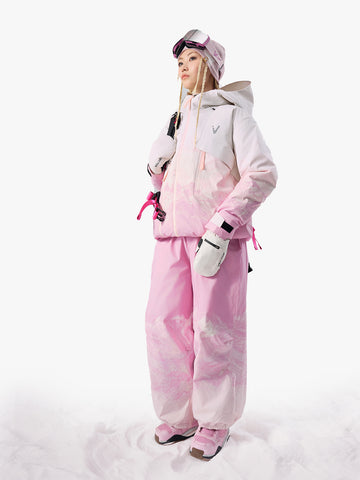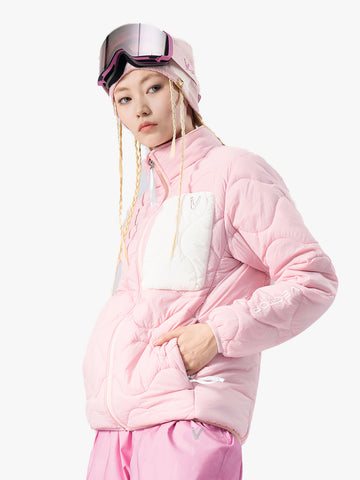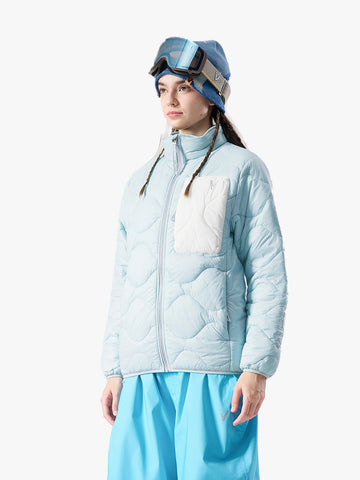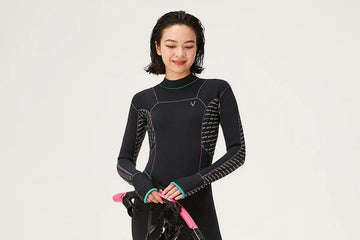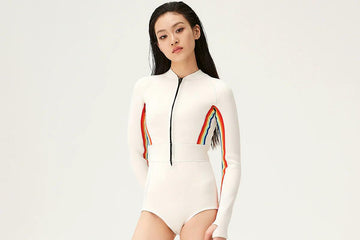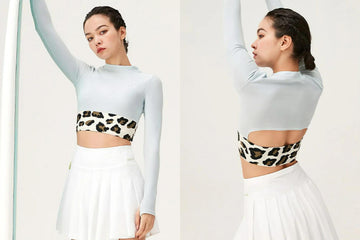Have you ever wondered why some people look perfectly at ease in freezing waves while others shivering? It’s all about the wetsuit! The right thickness provides crucial insulation, trapping a thin layer of water between your skin and the suit that your body then warms up. Whether you're diving into icy ocean waves or enjoying a paddle in warmer seas, the thickness of women's wetsuits can make or break your experience. Too thick, and you might feel restricted and overheated; too thin, and you'll be shivering in no time. Dive into our guide and let’s make sure you pick the best wetsuits for women and find the women's spring suit thickness that’ll keep you warm and happy, no matter where your water adventures take you!
We will guide you:
Neoprene Thickness
Why Do Most Wetsuits Employ Varying Thicknesses of Neoprene?
How To Choose Your Wetsuit Thickness?
Neoprene Thickness
Neoprene thickness refers to the measurement of the neoprene material used in wetsuits, which is typically expressed in millimeters (mm). It indicates the thickness of the rubber layer that provides insulation and warmth to the wearer. Now, why does this matter? Well, the thicker the neoprene, the warmer you'll stay because it provides better insulation. Think of it like a cozy blanket that keeps the cold water out. But here's the catch: the thicker the neoprene, the less flexible it gets. So, you might feel a bit like a stiff board if you go too thick! Typically, neoprene thickness for surfing varies from 1-2mm for tops and summer wetsuits to 6mm for those designed for cold water conditions.
Why Do Most Wetsuits Employ Varying Thicknesses of Neoprene?
Wetsuits use different thicknesses of neoprene to balance warmth, flexibility, and comfort for various water conditions. Thicker neoprene provides better insulation, keeping you warmer in cold water, but it can be less flexible and restrict movement. Thinner neoprene, on the other hand, offers more flexibility and freedom of movement, making it ideal for warmer water but offering less insulation. Wetsuits use different thicknesses of neoprene to ensure that key areas like the arms and legs have greater flexibility, as freedom of movement in these parts is crucial. Thinner neoprene in these areas allows for easier paddling and kicking, while thicker neoprene around the torso helps keep your core warm. This combination ensures both warmth and mobility, optimizing your performance and comfort in the water.
How To Choose Your Wetsuit Thickness
1-2mm Wetsuits
Warm Water: 75°F and above / 24°C and above
Ideal for warm water conditions, providing minimal insulation to protect against sunburn and minor abrasions while allowing maximum flexibility and freedom of movement. Great for tropical climates and summer conditions.
2-3mm Wetsuits
Mild Water: 65-75°F / 18-24°C
Perfect for moderate water temperatures. This thickness offers a good balance of warmth and flexibility, making it suitable for spring and fall conditions or slightly cooler summer days. VECTOR MOTION is a great choice. This 2.5mm wetsuit offers a perfect blend of warmth and flexibility with a stylish, slimming design. It’s easy to put on and take off, retains heat well, and is highly durable and tear-resistant, ensuring protection and elegance in all your water adventures.
4-5mm Wetsuits
Cold Water: 50-65°F / 10-18°C
Designed for colder water temperatures, these wetsuits provide significant insulation to keep you warm while still offering some flexibility. They are ideal for winter surfing, diving, and other water sports in cooler climates.
6mm and Thicker Wetsuits
Frigid Water: Below 50°F / 10°C
Essential for icy water conditions, these wetsuits offer maximum insulation. They are typically used for activities such as winter diving, ice swimming, and other cold-water sports. Some wetsuits in this category also include additional features like integrated hoods, gloves, and booties for extra warmth.
Summary
The choice of neoprene thickness depends on factors such as water temperature, personal preference, and intended water activities. Besides neoprene thickness, factors like wetsuit construction, climate, activity level, sensitivity to cold, and the use of accessories impact how warm you feel in the water. Consider these factors to choose the most suitable wetsuit for your needs and preferences.
FAQ
Q: What temperature is a 7mm wetsuit good for?
A: A 7mm wetsuit provides excellent insulation and warmth, making it ideal for cold water conditions such as winter surfing or diving in frigid temperatures. Its thickness effectively traps a layer of water close to the body, keeping you warm and comfortable even in icy waters.
Q: Is a 5'4" wetsuit too thick?
A: A 5/4 wetsuit is generally suitable for cold water conditions, typically ranging from 43°F to 52°F (6°C to 11°C). It might be too thick for warmer water, where a thinner wetsuit would provide more comfort and flexibility.
Q: Will a 2mm wetsuit keep me warm?
A: A 2mm wetsuit provides light insulation and is best suited for warmer water temperatures, typically above 70°F (21°C). It will keep you warm in mild conditions but might not offer enough warmth in colder water, where a thicker wetsuit would be necessary.
References:
https://www.evo.com/guides/wetsuit-thickness-and-temperature-chart
https://eu.oneill.com/blogs/all/wetsuit-thickness
https://www.surfer.com/forecast/wetsuit-thickness-and-water-temperature-guide
https://perfectwetsuit.com/guide/wetsuit-thickness-and-temperature-guide
https://www.billabong.com/blogs/expert-guides/wetsuit-thickness-guide



